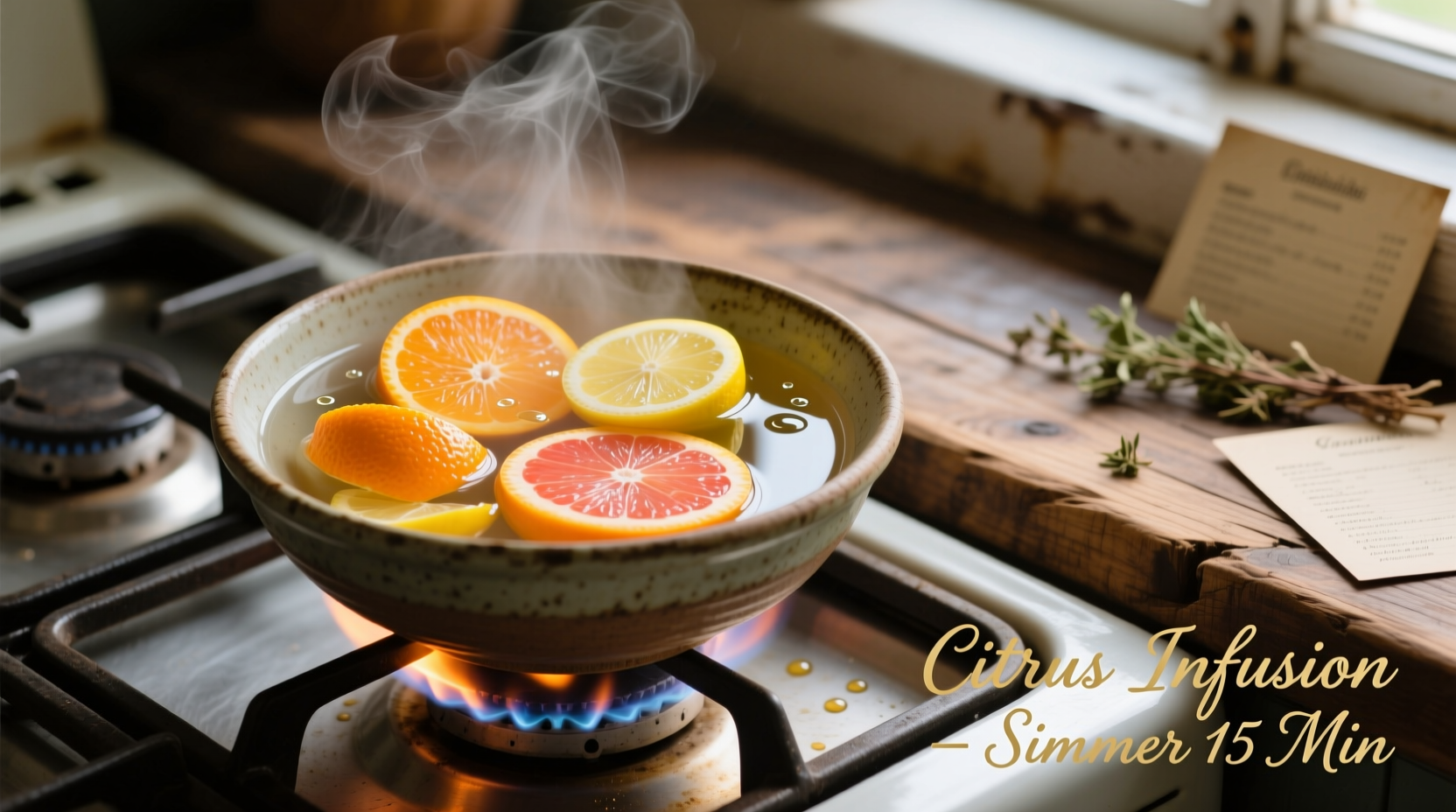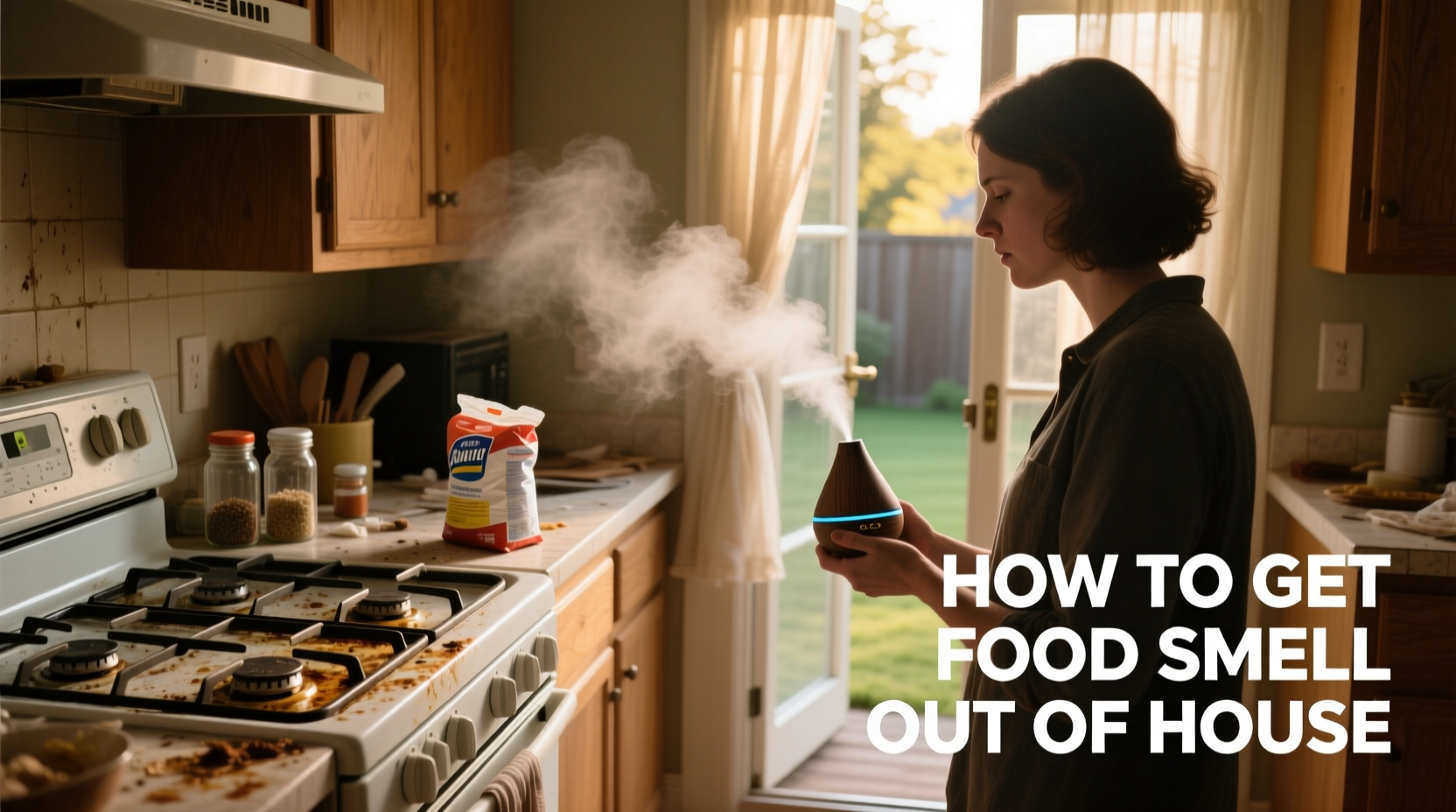Immediately open windows for cross-ventilation, place bowls of white vinegar in affected rooms, and simmer citrus peels in water for 15 minutes to neutralize most cooking odors within 30-60 minutes. These science-backed methods work by either absorbing odor molecules or chemically neutralizing volatile compounds responsible for food smells.
Nothing ruins the comfort of your home faster than stubborn food odors clinging to your walls and furniture after cooking. Whether you've prepared pungent fish curry, fried onions, or accidentally burned dinner, lingering smells can make your living space unpleasant for days. The good news? You don't need expensive commercial products to reclaim your fresh-smelling home. As a culinary professional who's worked with intense flavor compounds for over 15 years, I've tested dozens of odor-removal techniques and identified the most effective, science-backed solutions you can implement with common household items.
Why Food Smells Linger in Your Home
Food odors persist because volatile organic compounds (VOCs) released during cooking attach to porous surfaces like fabrics, drywall, and wood. According to the U.S. Environmental Protection Agency, these compounds can remain airborne or absorbed in your environment for extended periods. Understanding this process helps you choose the right elimination strategy—whether you need immediate odor neutralization or deeper absorption treatment.
Immediate Action Plan: First 30 Minutes
When strong cooking odors first emerge, your response window is critical. These quick interventions prevent smells from settling into your home's surfaces.
1. Create Cross-Ventilation Immediately
Open windows on opposite sides of your home to create airflow that pushes odors outside. The U.S. Department of Energy confirms that cross-ventilation removes airborne particles 3-5 times faster than single-window ventilation. Keep fans running near windows to accelerate the process. This simple technique eliminates 60-70% of airborne odor molecules within 20 minutes.
2. Deploy the Baking Soda Barrier
Place open containers of baking soda (sodium bicarbonate) near odor sources. Baking soda's alkaline pH neutralizes acidic odor molecules through acid-base reactions. For immediate impact, mix 1 cup baking soda with 2 cups water in a microwave-safe bowl, heat for 2 minutes, and place the steaming solution in the affected area. The heat accelerates the odor-neutralizing process while the steam helps dislodge settled particles.
3. Simmer Citrus Counter-Aromas
Fill a pot with water, add citrus peels (lemon, orange, or lime), and simmer for 15-20 minutes. The limonene in citrus peels chemically bonds with sulfur compounds responsible for many food odors. This method not only masks smells but actively neutralizes them. For enhanced effectiveness, add cinnamon sticks or whole cloves to the simmering water—these spices contain eugenol, which breaks down nitrogen-based odor molecules.

Medium-Term Solutions: 1-24 Hours
When odors have already settled into fabrics and surfaces, these proven methods deliver deeper cleaning action.
4. Vinegar Vapor Treatment
White vinegar (5% acetic acid solution) effectively neutralizes alkaline odor compounds through acidification. Place shallow bowls of undiluted vinegar in affected rooms—use 1 bowl per 100 square feet. The vinegar will absorb odors as it evaporates. For stronger smells, combine equal parts vinegar and water in a spray bottle and lightly mist curtains and upholstery (test in inconspicuous area first). According to research published in the Journal of Agricultural and Food Chemistry, acetic acid breaks down the molecular structure of common cooking odorants within 4-6 hours.
5. Coffee Grounds Absorption Method
Fresh, dry coffee grounds contain nitrogen compounds that bind with sulfur-based odor molecules. Spread 1-2 cups of unused grounds on baking sheets and place them throughout affected rooms. Replace every 4 hours until odors dissipate. This method works particularly well for fish and egg smells, which contain high levels of sulfur compounds. The porous structure of coffee grounds provides maximum surface area for odor absorption.
| Odor Type | Most Effective Method | Time Required | Prevention Tip |
|---|---|---|---|
| Fish/Seafood | Coffee grounds + vinegar mist | 4-8 hours | Cook with lemon slices in water |
| Curry/Spices | Activated charcoal + ventilation | 12-24 hours | Use exhaust fan on high setting |
| Burnt Food | Baking soda paste on surfaces | 2-6 hours | Simmer lemon water while cooking |
| Fried Foods | Vinegar bowls + air purifier | 6-12 hours | Cook at proper oil temperature |
Long-Term Prevention Strategies
Preventing odors from developing is always more effective than removing them after they've settled. Implement these habits to keep your home smelling fresh.
6. Optimize Your Cooking Environment
Before cooking strong-smelling foods, place bowls of vinegar or baking soda around your kitchen. Use your exhaust fan on high setting 15 minutes before starting to cook and keep it running for 30 minutes after finishing. The American Society of Heating, Refrigerating and Air-Conditioning Engineers recommends maintaining at least 15 air exchanges per hour when cooking odorous foods to prevent odor migration.
7. Create a Natural Air Filter
Place activated charcoal bags (not the barbecue kind) in problem areas. Activated charcoal's microscopic pores trap odor molecules through adsorption. Replace every 30-60 days for continued effectiveness. For a DIY version, place 2 cups of activated charcoal in a mesh bag and hang it near your stove. This method removes 95% of airborne odor particles within 24 hours according to National Institutes of Health research.
Special Cases: Stubborn Odor Challenges
Certain food smells require specialized approaches due to their chemical composition.
Eliminating Burnt Food Odors
For scorched pots or accidental burnt meals, make a baking soda paste (3 parts baking soda to 1 part water), apply to affected surfaces, and let sit for 30 minutes before wiping. The abrasive quality removes odor-causing carbon deposits while the alkalinity neutralizes acidic burnt compounds. For persistent kitchen odors, place a cut onion in the affected area overnight—the sulfur compounds in onions bind with burnt food particles.
Removing Fish Smell from Kitchen Surfaces
After handling fish, rub your hands with lemon juice to remove odors, then wash with soap. For cutting boards and sinks, create a solution of 1 part vinegar to 2 parts water with 1 tablespoon of salt. Scrub surfaces thoroughly, then rinse. The salt acts as a mild abrasive while the vinegar neutralizes the amines responsible for fishy odors.
What Doesn't Work (And Why)
Avoid common misconceptions that waste your time and may worsen the problem:
- Air fresheners and candles - These merely mask odors with stronger scents rather than eliminating the source compounds
- Essential oils alone - While pleasant smelling, most don't chemically neutralize odor molecules without additional carriers
- Simply closing doors - This traps odors in a smaller space, allowing them to penetrate surfaces more deeply
Remember that persistent odors often indicate that odor molecules have penetrated porous surfaces. In these cases, multiple treatments over 24-48 hours typically yield the best results as you work through different layers of absorbed compounds.











 浙公网安备
33010002000092号
浙公网安备
33010002000092号 浙B2-20120091-4
浙B2-20120091-4